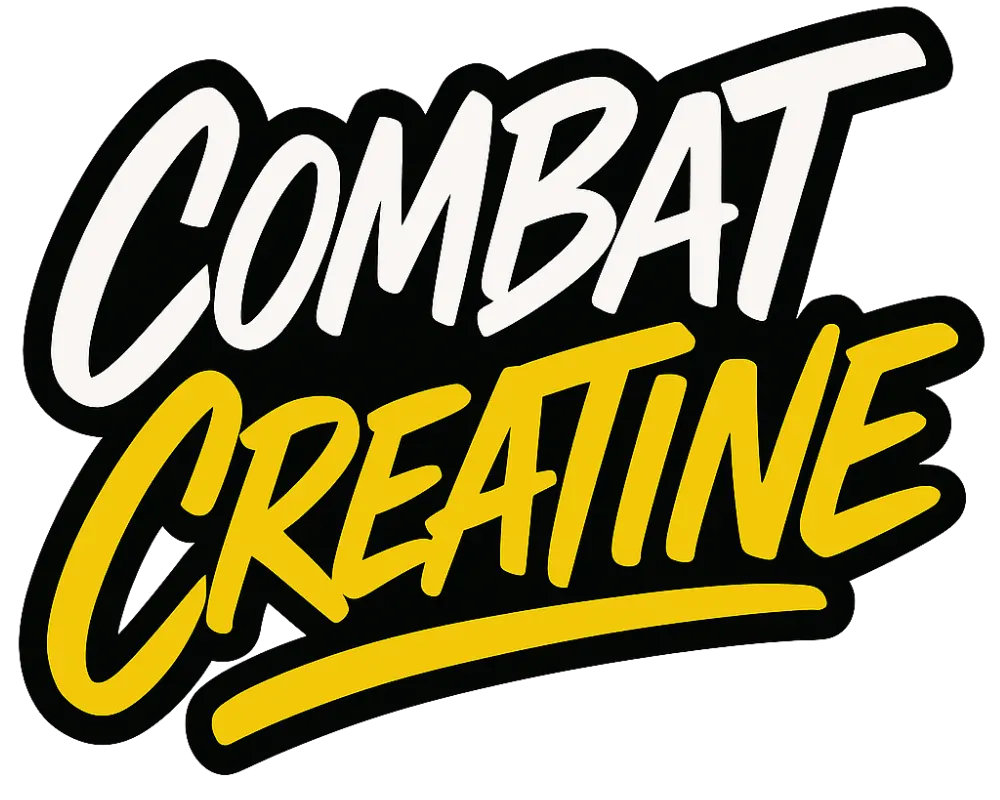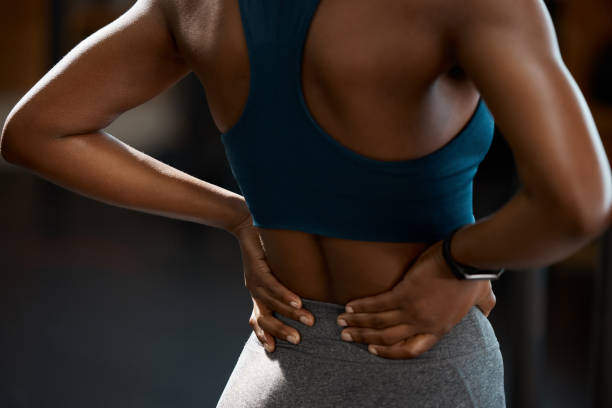5 Best Lower Back Exercises + Best Back Exercises Machines
Build a Strong Lower Back with Gym Equipment
Do you suffer from lower back pain? Have you been told to avoid exercising your back or using gym equipment? This is actually counterproductive advice for most people.
When done safely and correctly, strength training is crucial for building a strong and resilient lower back, improving posture, and relieving back pain.
This article will cover the benefits of exercising your lower back, go over essential safety tips, provide a complete guide to the best gym equipment to target your lower back muscles, and give tips on incorporating back exercises into your training regimen.
Follow along to learn how to strengthen your back and start feeling better.
Why Your Lower Back Needs Exercise
Your lower back is a complex structure made up of muscles, ligaments, joints, discs, nerves and bones that all work together to support your upper body and allow motion. Key muscle groups in this area include:
- Erector spinae: On both sides of your spine running from your pelvis up to your neck. This is the primary muscle group that extends and stabilizes your back.
- Multifidus: Small stabilizer muscles under the erector spinae anchoring vertebrae together.
- Glutes: Your gluteal muscles connect to muscles deep in your back and play a key role in stabilizing your pelvis and spine.
Due to the demands we put on our back on a daily basis from sitting for prolonged periods, carrying heavy loads improperly, slouching, or suffering back injuries, these muscles often become weak, tight, or imbalanced.
The result of muscular dysfunction frequently shows up as:
- Back stiffness and tightness leading to limited mobility
- Bad posture like excessive arching of the lower back
- Stabbing or nagging lower back pain
- Inability to lift heavy loads safely

Most [fitness professionals] agree – if you suffer from back pain, targeted strength training is key. Exercise helps you strengthen and stabilize muscles around your spine, improves flexibility that reduces pressure on discs and joints, and boosts blood flow needed for healing.
When you make back exercises part of your regular [strength training] regimen 2-3 times per week, you’re likely to see these benefits:
- Reduced lower back pain
- [Better posture] with less slouching
- Fewer back injuries and less chronic pain
- Increased [range of motion] and mobility of your spine
- Ability to lift heavier weights safely
- A strong and stable back making daily activities easier
Getting Started Safely
Before jumping into back exercises, follow these guidelines to make sure you don’t injure yourself or aggravate back pain:
- Get properly diagnosed if suffering from back pain before starting an exercise regimen – determine if certain motions should be avoided.
- Consult a trainer to ensure proper form on all movements – poor form is the most common cause of injuries.
- Warm up muscles beforehand with 5-10 minutes of light cardio or calisthenics to boost blood flow.
- Start with lower weight and higher rep sets until you perfect form and slowly increase weight.
- Pay attention to alignment and posture – no slouching or rounding!
- Avoid putting excessive strain on your back with heavy weights before you’ve built a base of strength.
- Listen to warning signs from your body and stop an exercise if you feel pain.
With the green light from your doctor and proper precautions taken, let’s look at the best back workout equipment available.
Best Gym Equipment to Target Your Lower Back
The right [gym equipment] allows you to isolate your lower back muscles safely and effectively. It helps support the lower back through the motions while providing varying levels of resistance.
Here’s an overview of our top recommendations:
1. Back Extension Machine

This is arguably the best piece of gym equipment specifically targeting lower back muscles like the erector spinae. The design allows you to isolate [muscle groups] in your lower back without placing strain on your spine like free weights.
There are two types:
- Prone: Lay face down on pads with your lower legs hooked. Then extend your back upwards against resistance provided by weight plates to work lower back muscles.
- Seated: Sit upright with pads against your shins. Lean forward at the waist and extend back against resistance.
Start with body weight only until you perfect form. The machine helps support you through the full [range of motion] while keeping the lower back [muscles engaged].
2. Assisted Pull-Up Machine

While pull ups primarily target your upper back, lats, biceps and forearms, by stabilizing your bodyweight they also strengthen intrinsic muscles deep in your lower back. This makes them an excellent addition to your back strengthening regimen.
However, strict pull ups where you lift your full body weight can put too much strain on your back if not strong enough yet. Here’s where the assisted pull up machine comes in handy - it supports some of your weight via a counterbalance to reduce strain on your back.
Over time as your back gets stronger, you can gradually reduce the counter resistance and do more of the work until able to perform full bodyweight pull ups. They also often have a seated row option to work your mid-back muscles.
3. Reverse Hyperextension

You position yourself face down on the machine with your hips resting on a pad and your legs hanging off the edge. The machine allows for reverse hyperextensions where your legs swing upwards against gravity, engaging not only your lower back but also your glutes and hamstrings.
What sets the Reverse Hyper apart is its ability to train the lower back daily, which no other piece of equipment can do. It can be used for strength training with heavy weight for lower reps, or for more volume and restoration with light/moderate weight for higher reps.
4. Cable Machines
There are a variety of ways cable machines can be incorporated into strengthening your back:

- Seated Cable Row – Retract your shoulder blades using cables handles to target upper back muscles like your rhomboids. Can use a narrow, neutral or wide grip.
- Straight Arm Pull Down – Works your latissimus dorsi muscles as you pull cables from an overhead pulley towards your hips while keeping arms straight. Helps build that coveted ‘V’ taper.
- Face Pulls – Use rope attachment pulling cables directly towards your face to isolate muscles between your shoulder blades. Improves hunched posture.
These movements hit your back from multiple angles to train all the intricate muscles. Adjust resistance as needed and focus on squeezing your back muscles throughout the movement.
Programming Back Exercises into Your Regimen
Now that you understand which machines best strengthen your lower back safely, let’s go over some pointers on incorporating equipment into your training:
- Allow for adequate recovery by training your back only 2-3 times per week max. Back muscles have limited blood supply and are prone to overtraining.
- Include both [isolation exercises] like the back extension machine along with multi-joint movements like pull ups that also require core stability. This produces the fastest strength gains.
- When starting out, do 2-3 sets of 12-15 reps focusing on perfect form before increasing weight. Lifting too heavy too fast raises [injury risk].
- As you get stronger, add in power sets of 6-8 reps with heavier weights 80+% your 1 Rep Max to build maximal strength. But limit these to avoid overtaxing your back.
- Vary [type of exercise], grip positions and stance width to continually challenge your back from different angles.
- Squeeze your shoulder blades together at the end of rows and pull downs to fully engage back muscles.

So in summary, a well structured back workout hits all the angles using a variety of gym equipment with a focus on safety and muscular endurance. Within just a few weeks you should notice a stronger, stabler back along with better mobility and less pain.
Just stick with it long term and continue challenging those all-important lower back muscles in new ways. Do that along with paying attention to recovery and nutrition, and you can transform how your back looks, feels performs.
Over time a stronger lower back gives you better posture, more confidence to lift heavier weights during total body exercises like squats and deadlifts, and reduces aches associated with muscular imbalances.
Consider it an investment not just vital for back health, but also long term performance, mobility and overall wellbeing.
5 Best Lower Back Exercises Using Gym Equipment
Now that you understand the benefits of lower back training and how to exercise safely, let’s overview the top-5 machines to target your lower back. These will strengthen all the intricate muscles that stabilize your spine, improve mobility, and prevent injury.
For each exercise we include details on proper setup, execution, tips, and recommended starting sets/reps.
Study these closely and use for reference when you hit the gym. Let’s dive in!
1. Back Extension (Prone)
This isolation exercise tops our list because it specifically hones in on your erector spinae and surrounding muscles using weight resistance.
Setup: Adjust the machine with pads just above your ankles. Place yourself face down on the bench with hips on pad and grip the handles.
Execution: With flat back, slowly lower your torso down in a controlled arc motion as far as flexibility allows. Raise back up to horizontal squeezing your glutes and back muscles once parallel to the floor. Repeat.
Tips: Avoid overarching at the top. Keep shoulders, hips and ankles aligned. Start with just body weight resistance before adding plates. Can do single leg variations for added challenge.
Guidelines: 2-4 sets of 10-15 reps
2. Seated Cable Row
One of the most effective ways to train your mid and upper back muscles responsible for good posture using gym equipment. Hits lots of areas prone to tightness/imbalance.
Setup: Sit tall on machine with chest up, shoulders back keeping back flat and engaged. Feet solid on platform, knees slightly bent.
Execution: Initiate movement by retracting shoulder blades then pull cable handles straight back towards lower ribs without arching back. Squeeze mid back muscles once handles are by your sides before slowly releasing resisting cables back to start position.
Tips: Avoid rocking backwards or slouching during motion. Stop short of fully straightening arms if shoulders round forward. Vary grip width. Can do single arm.
Guidelines: 2-4 sets of 10-15 reps
3. Lat Pulldown Behind The Neck
The lat pulldown machine builds strong and stable shoulders while working muscles deep in your back. Just beware of this variation if you have shoulder issues.
Setup: Grip bar overhead about shoulder width with palms facing forward. Sit tall looking straight ahead with chest lifted and shoulder blades pinched together.
Execution: Initiate movement by depressing shoulders then pull bar down behind neck keeping elbows pointed down to sides. Squeeze lats at bottom before slowly returning along same path to start position with control.
Tips: Avoid swinging body or leaning back to pull more weight. Keep shoulders away from ears at top. Can do front version if shoulder mobility limited. Use V-bar or rope handle for variation.
Guidelines: 2-4 sets of 10-15 reps
4. Hyperextensions On Stability Ball
This creative exercise utilizes a stability ball to isolate lower back muscles while enhancing balance/coordination. The ball's instability forces your core to work overtime as well making it a great functional option.
Setup: Lie face down over a large stability ball with torso draped forward at hips and hands clasped behind your head. Straighten legs fully with toes dug into floor supporting some of your weight.
Execution: Keeping torso rigid, raise chest off the ball by extending spine as high as flexibility allows. Make sure to squeeze glutes and avoid overarching lower back. Hold 1-2 seconds before lowering under control.
Tips: Adjust difficulty by placing feet wider apart or closer together on floor to modify leverage. Start with smaller sets until you build endurance. Can do single leg raise variations for added challenge.
Guidelines: 2-3 sets of 10-15 reps
5. Seated Row Machine
This gym staple targets all the muscles that run the length of your spine improving strength for upright posture. Be sure to retract shoulder blades fully with each pull.
Setup: Sit tall on bench with chest lifted gripping handles. Place feet flat for leverage keeping back rest close to hips. Maintain flat rigid spine not allowing it to round by pre-engaging core.
Execution: With straight arms fully extended in front of chest and shoulders depressed, squeeze mid back muscles pulling handles straight back towards lower ribs. Once hands brush past rib cage, reverse motion slowly back to start resisting pull of weights.
Tips: Avoid rocking backwards or slouching as you pull. Vary grip width each set. Can do single arm rows for variation.
Guidelines: 2-4 sets of 10-15 reps
After going through each, hopefully you noticed some common themes on execution like maintaining a flat rigid spine, avoiding overarching your lower back, and squeezing your back muscles at the end ROM.
Adhering to these form cues is what will allow you to gain strength while preventing unwanted strain.
Be extra cautious and deliberate in all movements for first few weeks allowing your body to adapt. Don't let your ego push too much weight before you've built a base - that's typically when injuries happen. Allow your muscles, tendons and ligaments time to develop power and control.
Before long you'll be moving steady weight on all these lower back exercises pain-free. Just stick with it long term programming them into your workouts 2-3 times per week.
Vary specific exercises each session and experiment with different foot stances, grip widths etc. to continually create new stimulus.
Let's recap our top 5:
- Back Extension Machine
- Seated Cable Row
- Lat Pulldown Behind the Neck
- Hyperextensions on Stability Ball
- Seated Row Machine
This combination hits the muscles from all angles. After a few months of focused training, you’ll start noticing serious improvements in how your back looks, feels and performs daily. You got this!

Key Takeaways
- A strong lower back provides a sturdy foundation for your spine, improves posture and reduces back pain.
- Targeted strengthening exercises using gym machines isolate back muscles safely while removing spinal load.
- Equipment like back extension machines, assisted pull up machines and cable rows effectively train all the intricate muscles groups.
- Focus on lighter weights with strict form before progressing gradually to heavier loads.
- Train your back 2-3 times per week allowing plenty of recovery between sessions.
By incorporating science-backed equipment into your back strengthening programming, you’re giving your body the specific stimulus it needs to build a stable, pain-free lower back.
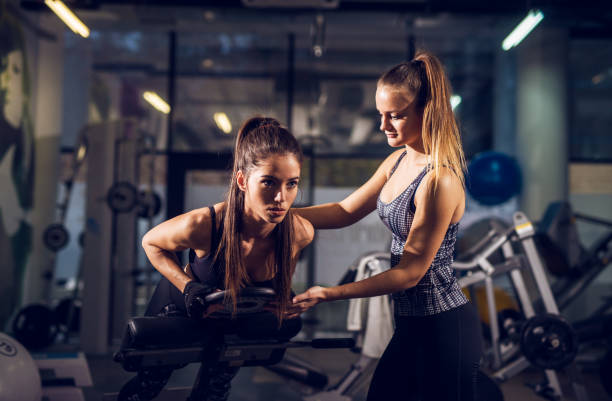
Additional Tips to Maximize Results
To conclude, here are some final tips to help you get the most out of your back workouts leveraging gym equipment:
- Thoroughly warm up back muscles beforehand with body weight back extensions or light cardio before hitting machines. Cold tight muscles are vulnerable.
- Pay extra attention to form on all movements for first month regardless of weight used. Lifting too heavy too fast before adapting motor patterns invites injury. Be patient.
- Consider scheduling back exercises first in your workout when muscles are fresh before doing compound lifts like deadlifts or squats.
- Loosen up tight hips and hamstrings on off days with stretches like figure 4 pose, cat cow pose, child’s pose etc. Tension in these areas contribute to back tightness.
- On recovery days, use portable hip circles when standing around for extended time. Keeps blood flowing.
- Monitor daily posture habits like sitting, standing and walking. Are you shortening back muscles by slouching and rounding shoulders? Keep chest lifted.
That covers all our top tips for building a stronger, stabler back leveraging gym equipment and targeted exercises. Just remember slow and steady consistency over time following sound programming principles wins the race.
Stick with these 5 dynamite movements 2-3 times weekly along with smart recovery practices, and you'll make serious progress month after month.
Here’s to feeling and moving better long term by taking control of your lower back strength!
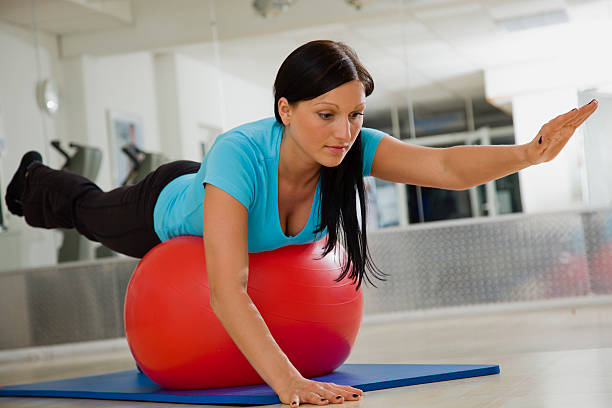
Frequently Asked Questions
What are the best back exercises to build strength?
Some of the best back exercises to build strength include: [barbell] rows, one-arm [dumbbell] rows, pull-ups and chin-ups using bodyweight or assisted machine, [back extensions], and deadlifts. Always focus on proper form and technique before increasing weight. Build gradually over time.
Which back muscles do “bird dogs” work?
The [bird dog] exercise primarily works your lower back muscles like the erector spinae along with glutes and opposing arm/leg muscles. It’s considered a full body exercise requiring balance and stabilization from your [core back muscles].
What muscles get worked doing bent-over rows?
[Bent-over rows] strongly activate the latissimus dorsi, rhomboids, rear deltoids and biceps. When done properly with good form, you should feel it across your whole upper [back muscles] especially the lats and rhomboids between your shoulder blades.
Can I build my back only using gym machines?
Yes, you can build a strong muscular back only using [gym equipment] like cable machines, lat pulldowns, low rows, assisted pull up machines etc. You can train all the intricate muscles this way. However, for best results combine machine training with some free weights/bodyweight exercises.
How does back training improve my posture?
Strengthening your [lower back] and mid-back muscles enables you to more easily keep your spine aligned and shoulders back. This combats poor posture habits like rounding your shoulders, poking your head forward and arching your lower back.
Should I use heavy weight for back exercises?
When first starting back training, focus on lighter weights with strict form often higher reps 12-15. But as you build strength over time, adding some heavier lower rep sets like 6-8 reps builds [muscle and strength]. Just don’t sacrifice form and always include injury prevention exercises.
What if back exercises cause me pain?
It’s essential to first get properly diagnosed by a doctor if you have injuries or pain before beginning new exercises. Always listen to warning signs from your body during workouts. If any exercise causes pain or discomfort, stop and reassess your form or consider regressions before continuing. Don’t work through pain or force range of motion. Consider physical therapy.
How many back exercise sets should I do?
Most experts recommend doing 2-4 sets per exercise targeting back muscles allowing 48 hours before training same muscles again. Adjust volume based on your recovery ability and goals. Start on the lower end 2 sets if new to strength training. Mix up rep ranges each set.
How can I build a stronger upper back?
Some of the most effective ways to build a stronger upper back involve [exercises] like lat pulldowns, seated cable rows, straight arm pulldowns, band pull aparts, and face pulls. Can supplement with upper back machine work on days. Ensure you fully retract your shoulder blades during rows!
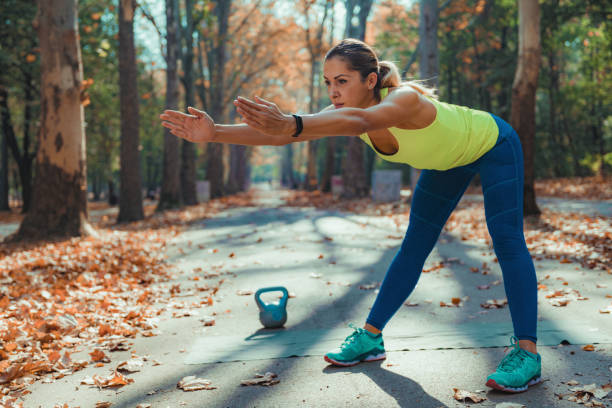
My Journey to a Stronger, Pain-Free Lower Back
Finding the Right Exercises After Injury
After years of long hours slouched over a computer for work, I started having nagging lower back pain. Sharp stabs when getting up plus chronic tightness. I quit doing compound lifts like [deadlifts] and [squats] thinking it would help. But it only got worse to the point where even bodyweight [exercises] like squats hurt.
My doctor diagnosed me with an inflamed facet joint putting pressure on a nerve. He suggested trying physical therapy and easing back into [strengthening exercises]. I started with simple [glute bridges] and [bird dogs] plus lots of stretching which helped some. But wanted to rebuild back strength to improve [posture] and stability long-term.
So I hired a personal trainer knowledgeable on back injuries. She recommended very controlled lower weight [dumbbell] exercises to start along with core stability work. We focused on fundamentals - great form over everything! Did lots of [bodyweight back extensions], prone Cobras, and Paloff presses gently easing into it.
Was surprised how quick 12 reps fatigued me early on! But through consistency, I eventually worked back up being able carry out full [bodybuilding] style back sessions again.
Finding the Right Equipment
After establishing better mind-muscle connection and confidence in free weights, my trainer suggested incorporating some [gym equipment]. The key was choosing machines providing lumbar support through the fullest ranges of motion without spinal loading. Discovered the chest supported row, low back extension, and assisted pull-up machines felt best.
It was humbling dropping the weight way down starting out again. But was amazed how much tension I felt on lower weights when form was spot on. I’d squeeze my [shoulder blades] hard each rep focusing on just my back muscles with no momentum. Did about 3 sets per machine in those first months back.
Over time, my capacity ramped up fast doing sets of 12-15 building muscular [endurance]. On recovery days I still stretch routinely with hip openers like figure 4 stretch and stretch my [posterior chain]. Building sustainable strength is a lifestyle!
These days I’m mostly pain free, have better mobility, and lift heavier thanks to targeted machine work. I credit injury prevention machines for rebuilding my base.
My advice? Take it slow, be patient with lower back injuries, and the strength will come back better than before! Just listen to your body.
Tips for Lower Back Machine Exercises
Here’s my top tips for making the most of back machines based on hard learned lessons:
- Avoid overly rounding your lower back during any movement - keep neutral
- Lighten the load until you nail perfect form rather than grinding
- Constant tension & controlled motions are key - no jerky reps
- Squeeze those back muscles hard at the top of each rep
- Still wrap up workouts with old school superman stretches
- Mix up your grips, stance widths and angles to keep adapting
Your lower back is complex with so many intricate muscles. It takes time to strengthen properly after injury. But committing to lower weight high quality sets over time using the right machines dramatically improves back health and resilience.
Just stick with it long term and keep learning new movements and challenges for your back. It responds well to dedication and patience in my experience!

References
- Shiri, R., Coggon, D., & Falah-Hassani, K. (2018). Exercise for the Prevention of Low Back Pain: Systematic Review and Meta-Analysis of Controlled Trials. American Journal of Epidemiology, 187(5), 1093-1101. This study assessed the effect of exercise in interventions aimed at preventing low back pain (LBP) and related disability. The authors found that exercise alone reduced the risk of LBP by 33%, and when combined with education, by 27%. Additionally, the severity of LBP and disability were lower in exercise groups compared to control groups.
- Owen, P. J., Miller, C. T., Mundell, N. L., Verswijveren, S. J. J. M., Tagliaferri, S. D., Brisby, H., Bowe, S. J., & Belavy, D. L. (2020). Effects of exercise therapy in patients with acute low back pain: a systematic review of systematic reviews. Systematic Reviews, 9, 171. This paper systematically reviewed the evidence regarding the effects of exercise therapy for adult patients with acute low back pain, in comparison to other interventions. The review suggests that there is very low to moderate certainty that exercise therapy may result in little or no significant difference in pain or disability compared to other interventions.
- Smith, B. E., Littlewood, C., & May, S. (2020). Research relating to low back pain and physical activity. Journal of Pain Research, 13, 287-292. This article provides a systematic overview of scientific research from 2000 to 2020 relating to low back pain and physical activity. The authors present a comprehensive analysis of the available literature on this subject.
For More Training Advice + Diet and Lifestyle visit us Combat Creatine
PS: Make sure you check out the rest of our Training Guides:
Creatine
Creatine Supplements Ultimate Guide
Creatine Supplementation Side Effects
Best Creatine Monohydrate Gummies Review: Top 10 Best Creatine Gummies
Triceps
12 Best Long Head Tricep Exercises + Tricep Workout Ideas
Top 17 Tricep Extension Exercises | Triceps Extension Variations Guide
Perfecting the Triceps Pushdown: Tricep Pushdown for Upper Body Strength
10 Best Medial Head Tricep Exercises -Combat Creatine10 Best Lateral Head Tricep ExercisesThe Best Triceps Stretches to Loosen and Improve Flexibility
Understanding Triceps Tendonitis: Causes, Diagnosis, and Treatment for Elbow Pain
Tricep Dips Exercise Guide: Master The Triceps Dip
30 Best Tricep Exercises | Review The Best Triceps Exercises
Are Triceps Push or Pull? Push-Pull Workout
Biceps
12 Best Bicep Tendonitis Exercises | Biceps Tendon Treatment
The 10 Best Kettlebell Bicep Exercises for Bigger, Stronger Arms
The 14 Best Resistance Band Bicep Exercises | Top Biceps Resistance Band Exercises
The 14 Best Short Head Biceps Exercises | Short Head Bicep Exercise Workout
17 Best Long Head Bicep Exercises | Top Biceps Exercise
The 20 Best Bicep Exercises | Best Biceps Exercise & Bicep Workout
Get Stronger Biceps with a Bicep Curl Machine
Chest
13 Cable Chest Exercises to Build Bigger Pecs
The Spoto Press: How This Unique Bench Press Variation Can Boost Your Bench
The 10 Best Chest Exercises for Building Muscle
10 Best Dumbbell Chest Exercises for Building Your Pecs
The 5 Best Chest Exercise Machines for Maximum Growth in 2024
5 Best Compound Chest Exercises for Building a Bigger Chest
16 Best Kettlebell Chest Exercises: Pump Up Your Pecs
5 Best Chest Workout Machines for Maximum Muscle Growth
6 TRX Chest Exercises for a Bigger Chest - Best TRX Workout!
14 Common Chest Expander Exercises
Back
10 Best Cable Back Workout Exercises
10 Best Kettlebell Back Exercises & Back Workout
5 Best Calisthenics Back Exercises + Calisthenics Back Workout
5 Best Lower Back Exercises + Best Back Exercises Machines
Top 10 TRX Exercises To Build A Stronger Back
10 Best Resistance Band Back Exercises + Back Workout
11 Best Landmine Exercises For Back & Upper Body
15 Best Smith Machine Back Exercises
Top 3 Back Exercises For A Stronger Back: Build Size And Strength
The Complete Helms Row Guide | Form, Muscles Worked, and Benefits
How to Do the Lat Spread Pose Like a Pro Bodybuilder
Shoulders
The 10 Best Cable Shoulder Workouts & Cable Shoulder Exercises
Shoulder Impingement Exercises For Shoulder Impingement Syndrome
8 Best Shoulder Bursitis Exercises
16 Best Cable Shoulder Exercises To Build Muscle & Shape Delts
10 Best Shoulder Dislocation Rehab Exercises
Shoulder Calisthenics Workout | Bodyweight Shoulder Workout
10 Best trx shoulder exercises | TRX Suspension Training
5 Frozen Shoulder Exercises For Pain Relief
Around the World Shoulder Exercises + Workout
8 Best Compound Shoulder Exercises
Supraspinatus Stretch: Your Supraspinatus Muscle & Rotator Cuff
Legs
9 Compound Leg Exercises | Best Compound Exercises For Lower Body
12 Best Kettlebell Leg Exercises | Leg Workout
Best 18 Calisthenics Leg Exercises | Calisthenics Leg Workout
Best 10 TRX Leg Exercises For Lower Body | TRX Leg Workout
10 Single Leg Exercises to Build Explosive Leg Strength
8 Best Hack Squat Alternatives That Target Your Quads
Easy Wall Exercises For Legs | Wall Workout
8 Best Landmine Exercises | Landmine Leg & Lower Body Workout
The Best Leg Strengthening Exercises for Seniors
Leg Press Machine Exercise | Ultimate Leg Press Workout Guide
Glutes
7 Best Lower Glute Exercises for Building the Perfect Underbutt
The 8 Best Gym Machines For Glutes | Best Glute Machine Review
8 Best Dumbbell Glute Exercises & Glute Workout
The 11 Best Cable Glute Exercises: Cable Exercises To Build Your Booty
10 Best Compound Glute Exercises | Compound Exercises
7 Best Kettlebell Glute Workouts | Kettlebell Exercises For Glutes
9 Best Unilateral Glute Activation Exercises | Lower Body Unilateral Exercises
The Ultimate 12 Week Glute Building Workout Plan PDF
Nutrition
The Ultimate Guide to High Protein Meal Prep
The Menopause Diet: 5-Day Plan to Lose Weight
The Struggle is Real: Crafting the Perfect Cutting Diet Without Losing Your Mind
TikTok Viral Valencia Diet Plan: Fad Diet or Nutritional Benefits?
Bruce Lee Diet & Body Fat: Unmasking the Legendary Physique
Fitness
The Ultimate 20-Minute Beginner Workout At Home Without Equipment
8 Best Kettlebell Lunge Variations for Strength, Hypertrophy and Cardio
How to Get Jacked: The Complete Guide to Building an Incredible Physique
How to Choose the Best Kettlebell Weight to Start With
Guide To Workouts For Beginners | Beginner Workout ExercisesPlank Every Day for 60 seconds | Plank Exercise Variations
Lionel Messi Shows Off Shredded Ab Workout
Sam Sulek Workout And Diet | Fitness Biography
Animalhouse Fitness: Lift Dumbbells with MonkeyFeet for Stronger Hamstrings and Hip Flexors at Home
Total Body Enhancement at Planet Fitness. How it works
Split Stance Trap Bar Deadlift Exercise: Variation That Builds Muscle
How Long Should You Wait to Exercise After Tooth Extraction?
Lifestyle
The Ultimate Guide to Ice Bath and Cold Plunge Temperatures & Time
The Ultimate Fitness Guide for Busy Dads
12 Clever Ways to Hide a Treadmill In A Room
Does Planet Fitness Have Scales?
